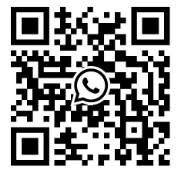Demand Analysis
China's distribution network is complex and prone to faults, the use of traditional fault indicators to achieve line fault segmentation and positioning, fault information can not be transmitted remotely, does not have automatic fault location function, the need for manual patrol, increasing the difficulty and time to find faults; the use of highly integrated distribution terminals to achieve the fault identification, fault isolation, network reconfiguration, and distribution network reactive power/voltage control and optimization of the network, etc., this solution is certainly an important option for distribution network automation, but the installation and operation is more complex and difficult to promote in some locations. This program is certainly an important choice for distribution network automation, but the installation and operation is complicated and difficult to promote in some locations. Therefore, it is necessary to upload the fault information collected by the fault indicator to the automation master system through simple and low-cost communication means, so as to realize the automatic positioning of fault zones.
the principle of work
When the distribution line is short-circuited, grounded, blackout and power supply and other operational status changes, the fault indicator detects the changed signals and transmits them to the communication terminal through short-distance RF signals; and then sends the information to the master station through the communication terminal via GSM / GPRS. The computer of the master station intuitively displays the fault section through the flashing of line color change; at the same time, it pops up a dialog box to prompt the alarm; and sends the fault information to the inspector's cell phone in the form of short message.
Functional characteristics
3.1 Functions of overhead remote fault indicator
1、Identification of faults: it has the function of identifying short-circuit and grounding faults; and it can distinguish between sexual faults and transient faults.
2、Display mode: flop display or light-emitting display can be observed within 360°, when flop mode, the display board adopts night vision reflective technology;
3、Automatic reset: the fault indicator probe has the function of delayed automatic reset or (and) remote control reset, the automatic reset time can be specified by the user or factory setting; automatically start counting when the fault occurs.
The error of return time is not more than ±10%;
4、Electrified mounting and dismounting: it can be mounted and dismounted with electricity, and no false alarm occurs during the mounting and dismounting process;
5、Signal telecommunication: built-in wireless communication module can telecommunicate the action signal to the overhead communication terminal.
3.2 Functions of gathering unit
1、Wireless reception: receive the fault point information sent back by the communication type fault indicator through wireless radio frequency;
2、Information sending: sending fault information to the center station, GSM, GPRS, RS232, RS485 or Ethernet and other communication modes can be used;
3、Backup power supply: equipped with solar panels to charge the backup power supply. The backup power supply can keep the communication terminal working for 7 consecutive days without replenishing energy.





